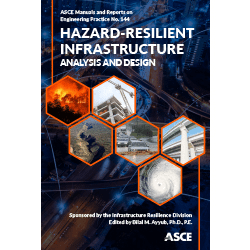New ASCE Manual of Practice 144 Provides a Framework to Plan and Design for Hazards

Reston, Va. – Natural disasters such as earthquakes, droughts, floods, and storms, affect a large portion of the world’s population. Infrastructure resilience and sustainability are critical system characteristics to prepare and endure as a society. ASCE’s new book, Hazard-Resilient Infrastructure: Analysis and Design, MOP 144, provides guidance and underlying framework for creating consistency across hazards, systems, and sectors in the design of new infrastructure systems and in enhancing the resilience of existing ones.
Using probabilistic methods for risk analysis and management of infrastructure projects, this MOP addresses uncertainties within a planning horizon timeframe effectively, including:
- identifying and analyzing hazards, system failures, associated probabilities and consequences including direct and indirect losses,
- failure and recovery profiles quantification of resilience,
- effects on communities,
- economics of resilience, and
- technologies for enhancing resilience for new, as well as existing infrastructure.
“We designed this Manual of Practice to help foster consistent and coordinated infrastructure systems,” said Bilal M. Ayyub, Ph.D., P.E., Dist.M.ASCE, editor of the manual of practice. “The most important thing we can achieve is the building of resilient communities.”
The examples and case studies will assist engineers, planners, researchers, and other community stakeholders as they make assessments, and plan and design decisions related to all types of hazards and infrastructure.
To purchase online visit the ASCE Bookstore
Limited review copies are available for book reviews. Please contact Leslie Connelly, [email protected].
About ASCE


